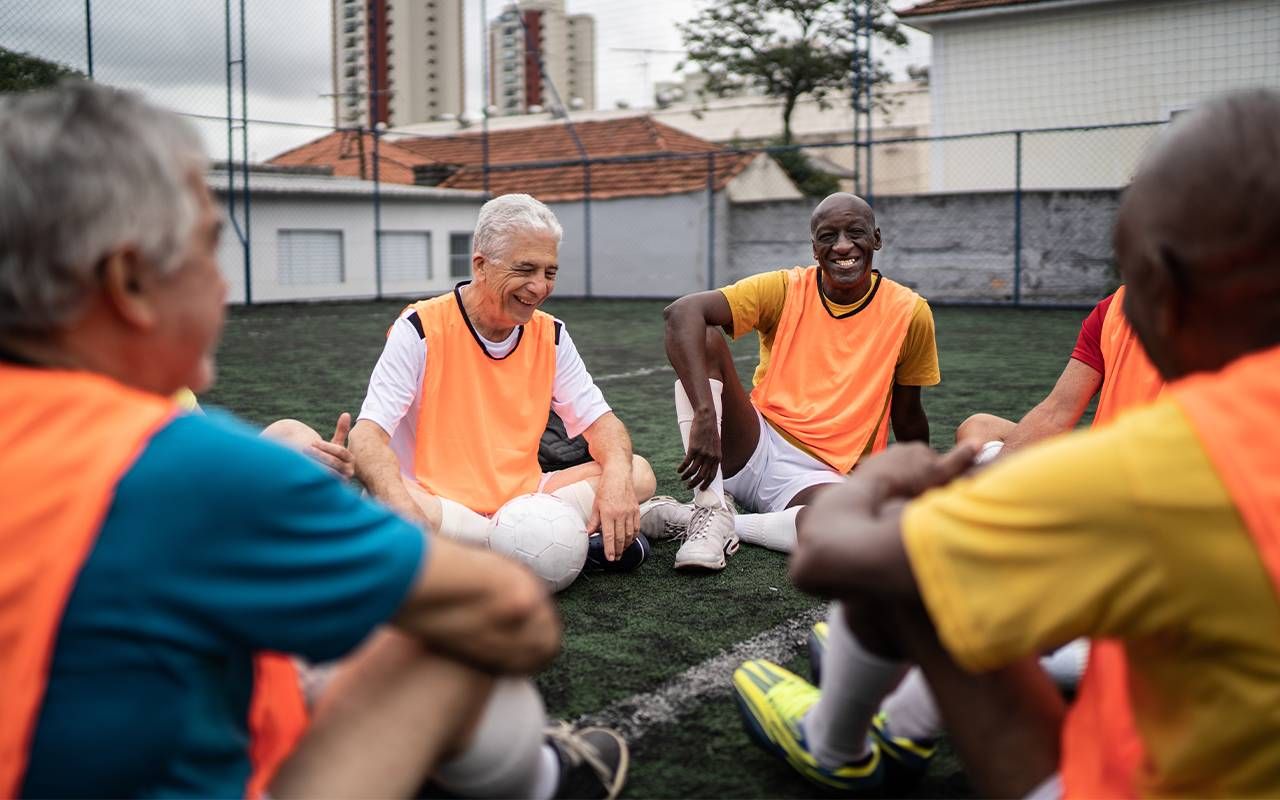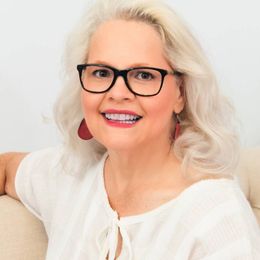Great News! We Are Getting Healthier
According to a new study, older Americans are heading in the right direction and staying healthier longer
A study published February 2, 2023, in the International Journal of Environmental Research and Public Health, discusses findings in time-based trends over ten years (2008 to 2017) in a sample of 5.4 million older Americans. This study focused on two measurements: activities of daily living (ADLs) and functional limitations (FLs) among Americans aged 65 and older.

The ADL question: "Does this person have difficulty dressing or bathing?" The FL question: "Does this person have serious difficulty walking or climbing stairs?" Both measurements are fundamental to maintaining independence throughout life.
The big takeaways from this research are that ADL limitations decreased by 20% (representing 2.17 million fewer people), and FLs decreased by 13.8% (representing 1.89 million fewer people) overall for Americans aged 65 and older over the ten years studied.
The good news is that older Americans are heading in the right direction and staying healthier longer.
The good news is that older Americans are heading in the right direction and staying healthier longer. More good news, even if you are not going in the right direction, there is always time to focus on your health.
The authors performed statistical analyses on the 5.4 million older Americans studied to see if there were any critical statistical differences between gender, age, race and educational attainment. The finding with the most significant difference, educational attainment, is exciting and worth a further look.
Educational Attainment
Educational Attainment plays a crucial role in decreased ADL limitations and FLs. The trend for attaining a high school diploma in the 65 and older study category increased from 72% to 84% in 2015. Attainment of a bachelor's degree increased from 17% to 27% in the same period.
People with higher health literacy are more likely to participate in health-promoting behaviors achieving lower rates of disability.
This increase in higher education played a pivotal role in decreasing the odds of a decline in both FLs and ADLs across all age groups. For this research, education was categorized by: no schooling, some schooling but less than grade 3 completed, each year of education completed from grade 3–11, grade 12 but no diploma, grade 12 regular high school diploma, general education diploma (GED), some college but less than one year, one or more years of college but no diploma, associate's degree, bachelor's degree, master's degree, professional degree and doctorate.
When the highest level of education was considered, the chances of a decline in ADLs across all age groups decreased from 9.6% to about 3.4%. The age group with the most notable decrease in ADL limitations was those aged 64-74 — when the highest level of education was considered, the risk of rules in ADLs was almost eliminated (0.05%). For FLs, when the highest level of education was included, the risk for overall age groups decreased from 13% to 4%.
Possible reasons for higher education resulting in better health included:
- People with higher education levels are more health literate. Health literacy is obtaining, reading, understanding and using health information to make appropriate health decisions and follow treatment instructions.
- People with higher health literacy are more likely to participate in health-promoting behaviors achieving lower rates of disability.
- Conversely, older adults with less education are more likely to have participated in a physically demanding career or to have retired due to a disability. They are more likely to have a loss of mobility.
Factors Contributing to Positive Outcomes
Other factors may contribute to the positive outcomes over the decade. These factors are risks that increase chronic health conditions that can lead to disability. Therefore, decreasing these risks can directly impact ADLs and FLs.
Even if you are not going in the right direction, there is always time to focus on your health.
- Decreased smoking. According to the Centers for Disease Control and Prevention (CDC), smoking rates have declined markedly in America since the 1960s. People who stop smoking prolong their years of life and extend the number of years they live without disability.
- Declining stroke rates. Although stroke is the third leading cause of disability in the world, stroke incidences have dropped by over 40% between 1970 and 2000.
- Improving environmental influences. Increased air quality due to less exposure to air pollution. Air pollution has decreased by almost half between 2000 and 2019. However, exposure to air pollution is associated with developing chronic health conditions and diseases.
- Decrease in hip fracture rates. Survivors of a hip fracture have worse mobility and functional dependence than people with no hip fracture. However, according to Medicare claims analyses, hip fracture rates decreased yearly from 2002 to 2012 and remained level from 2013 to 2015.
About the Baby Boomer Generation
The Baby Boomer generation (born between 1946 and 1965) is an estimated 73 million people who will all be 65 or older in 2030. They started turning 65 in 2011 and have shifted the U.S. demographics, making older Americans more significant in future planning by the government.
If the downward trend of FLs and ADL limitations continues, the results are better quality of life as Americans age and decreased health care spending associated with disabilities. However, an important issue particular to the Boomers could send the FL and ADL trend spiraling upward: obesity.
Boomers and Obesity
Obesity in an adult, according to the CDC, is a BMI (body mass index) of 30 or higher. Obesity is associated with increased mobility difficulties, including walking, stair climbing and being able to rise from a seated position, such as getting up out of a chair. Obesity is a risk factor for developing ADL limitations and FLs.
Members of the Boomer generation experienced more obesity and became obese at an earlier age than prior generations. Obesity can lead to obesity-related chronic health conditions and diseases, including high blood pressure, high cholesterol, type 2 diabetes and heart disease.
Obesity is reversible. Talk to your health care provider to develop a plan to treat your obesity, live longer and avoid disability.
Issues Related to FLs and ADL Limitations
This study points out that having FLs and limitations in ADLs are related to severe issues in addition to the limits. FLs and ADL limitations are associated with some complex subjects:
- Poor sleep
- Decreased quality of life
- Increased social isolation
- Symptoms of depression
- Pain
Besides having FL and ADL limitations in common, there is something else: they are all reversible. Exercising is critical to reversing the trend of limitations in ADLs and FLs. According to The Office of Disease Prevention and Health Promotion at health.gov, increasing physical activity decreases pain, improves mood, improves sleep, reduces stress and lowers the risk of many diseases.
Fitness Advice from an Avid Exerciser
Texas resident Sarah Hudgins, 61, is a lifelong exerciser and actress turned real estate agent. She is currently the #6 female in the world in her age bracket in CrossFit, a type of fitness regimen.

When asked about what exercise she does, Hudgins explains that her workouts have changed over the years. "I've always done either dance or yoga or something. I've always had an exercise class," she says.
"I've gone to the YMCA. I've taken classes where we have handkerchiefs, and we dance around for an hour," says Hudgins. "I think the older you are, the more you need to move."
Pre-COVID, Hudgins was working as a real estate agent in Houston. She attended yoga classes during her lunch break or after work. Then the pandemic hit, the yoga studio closed, and she had to work from home.
Now working from home in her small Texas town of Wharton, Hudgins switched her exercise routine to match her new reality. "Wharton has a lovely (walking) trail, so I did six miles a day on the trail with my friends," she says. But, after walking for a while, Hudgins felt it wasn't enough. "You know, I needed that kick!"
Her niece introduced her to CrossFit. Hudgins says what people don't understand about programs like CrossFit is that everything is based on where you are, including age and ability. You are working on your level. The person next to you is working on their level. "So, I'm not working on the 40-year-old or 20-year-old levels," she adds.
Here are 5 tips from Sarah Hudgins for developing a healthy mindset:
- Get started. Take a slow walk around the block. You don't have to do anything except put on comfortable shoes, walk around the block, and enjoy it.
- Exercise first thing in the morning if you can. Then there is no excuse, and you already have an accomplishment to start the day.
- Get into a routine and take a friend with you. If it's just you, you can easily decide to skip. If you exercise with a friend, you can motivate each other. You won't want to cancel because you want to please them and vice versa.
- Be comfortable with your body at the age you are. One of the beautiful things about age is that we get more comfortable with ourselves.
- Don't starve yourself. It's okay to eat. Eat some fresh food, eat good food, but if you need to eat some ice cream, eat some ice cream. It's all in moderation.


